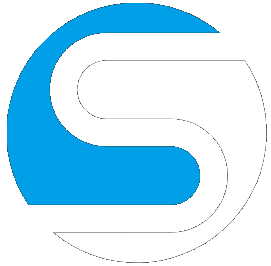Module 9: Lean Portfolio Management (LPM)
9.1 The View from the Top: Connecting Strategy to Execution
Welcome to Module 9. So far, we have focused on how Agile teams and Agile Release Trains (ARTs) execute work to deliver value. We’ve mastered the “how” of building solutions efficiently. But a critical question remains: how does an organization ensure that its dozens or even hundreds of Agile teams are all working on the right things? How do we connect the high-level strategic goals of the enterprise to the day-to-day work of the development teams?
This is the challenge that Lean Portfolio Management (LPM) is designed to solve. If the ART is the engine of value delivery, LPM is the strategic navigation system that sets the destination and ensures all trains are heading in the right direction. It is one of the seven core competencies of the Lean Enterprise and is essential for achieving true business agility.
Traditional project portfolio management often struggles in an Agile environment. It is characterized by long planning cycles, rigid annual budgets tied to specific projects, and slow, centralized decision-making. This approach creates friction and delay, undermining the very agility the teams are trying to achieve. LPM provides a modern, Lean-Agile alternative that aligns strategy with execution, enabling dynamic funding, flexible governance, and empowered, decentralized decision-making.
9.2 The Three Dimensions of Lean Portfolio Management
Lean Portfolio Management is not a single process but a combination of three key dimensions that work together to govern a SAFe portfolio.
- Strategy & Investment Funding: This dimension ensures that the entire portfolio is aligned with the business strategy and that investment decisions are made to maximize economic value. It answers the questions: “Are we investing in the right things?” and “How do we fund the flow of value?”
- Agile Portfolio Operations: This dimension focuses on coordinating and supporting the execution of the value streams within the portfolio. It answers the question: “How do we support the ARTs and ensure they can deliver value effectively?”
- Lean Governance: This dimension provides oversight of spending, audit, compliance, and performance measurement while empowering decentralized decision-making. It answers the question: “How do we measure performance and ensure accountability without resorting to traditional, heavyweight project management?”
Together, these three dimensions create a system that connects the enterprise’s strategy to the teams building the solutions, fostering alignment, transparency, and faster delivery of value.
9.3 Setting the North Star: Strategic Themes and the Portfolio Vision
To make effective decisions, a portfolio needs a clear “North Star”—a guiding vision that is directly connected to the enterprise’s broader strategic goals. This is established through two key artifacts: Strategic Themes and the Portfolio Vision.
- Strategic Themes: These are differentiating business objectives that connect the portfolio to the enterprise strategy. They are not vague statements but specific, measurable goals that provide the business context for all portfolio decisions. Strategic Themes influence everything from the portfolio vision and budget allocation to the prioritization of Epics in the Portfolio Kanban system.
- Example Strategic Themes:
- For a financial institution: “Expand into the mobile-first market for younger demographics.”
- For an online retailer: “Reduce warehouse operational costs through automation.”
- For a software vendor: “Implement a unified, single sign-on experience across all applications.”
- Portfolio Vision: The Portfolio Vision is a description of the future state of the portfolio’s value streams and solutions. It describes how the products and services within the portfolio will cooperate to achieve the Strategic Themes. The vision provides a high-level, long-term view that helps align all ARTs and stakeholders. It is often developed and visualized using a tool called the Portfolio Canvas, which captures the value streams, solutions, customers, budgets, and revenue streams for the portfolio.
9.4 Funding the Flow of Value: Lean Budgets and Guardrails
One of the most significant shifts in LPM is moving away from traditional project-based funding. Instead of funding temporary projects, SAFe advocates for funding long-lived Value Streams. This means allocating a budget to an Agile Release Train (ART) for a specific period (typically six months), empowering the ART to make decisions on how best to use those funds to deliver on the agreed-upon features and objectives. This approach dramatically reduces overhead, simplifies financial governance, and empowers decentralized decision-making.
To ensure financial accountability without resorting to micromanagement, this system of Lean Budgets is governed by four Lean Budget Guardrails. These guardrails are the policies and practices that provide oversight while maintaining agility.
- Guiding Investments by Horizon: This guardrail ensures that the portfolio balances its investments across different time horizons to ensure both near-term health and long-term viability. For example, a portfolio might allocate 60% of its budget to supporting and enhancing existing solutions (Horizon 1), 30% to emerging new opportunities (Horizon 2), and 10% to exploring future, innovative ideas (Horizon 3).
- Applying Capacity Allocation: This guardrail ensures that ARTs dedicate capacity to the different types of work needed to maintain solution health and progress. For each Program Increment (PI), leaders and teams might agree to allocate a certain percentage of the ART’s capacity to new business features versus technical enablers, maintenance, and reducing technical debt.
- Approving Significant Initiatives: While ARTs are empowered to make most decisions, very large initiatives (Epics) that require a significant investment still need review and approval. This guardrail ensures that these large investments are supported by a lightweight Lean Business Case and are approved via the Portfolio Kanban system.
- Continuous Business Owner Engagement: This guardrail ensures that Business Owners and other key stakeholders remain actively engaged with the ARTs. 13 Their continuous participation in events like PI Planning and System Demos ensures that the development work stays aligned with the evolving needs of the business.
9.5 Infographic: How Strategy Connects to Execution Through LPM
The following infographic illustrates the flow from high-level enterprise strategy down to the execution by the teams, all guided and enabled by Lean Portfolio Management.


